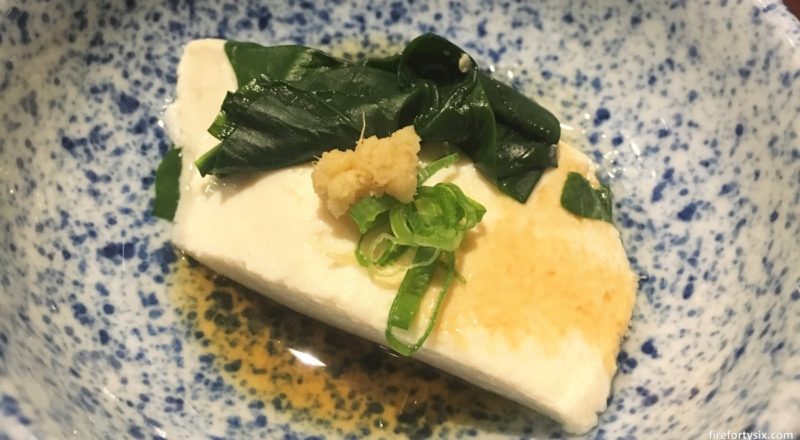Kaiseki-ryōri (懐石料理) is a Japanese culinary tradition that dates back centuries. It is a multi-course meal that highlights local ingredients through different tastes, textures and techniques.
The wide range of dishes acts as a showcase of the diversity in Japanese food — seasonal appetisers, raw sashimi, flavourful soups, steamed vegetables, stewed meats, simmered tofu, grilled seafood, fried morsels, hearty hotpots, rice with pickles and light desserts.
It can be presented simply in a bento box with each course in its own compartment, served elaborately in a fine dining setting with each dish unveiled individually, or something in between, depending on its price of course.
Each restaurant will have its own take, while still keeping within the broad confines of what constitutes a kaiseki meal. They don’t repeat, but they often rhyme.
Tosuiro (豆水楼)
The first proper kaiseki meal we had on our Kansai vacation was dinner at Tosuiro (豆水楼) in Kiyamachi, Kyoto. It was housed in a preserved traditional house just down the road from the hotel where we were staying. Turn left into a small alley and walk towards the bright paper lantern.


We were lucky enough to be seated at one corner of the main counter, with full view of the chefs preparing dinner in front of us and an inner courtyard behind us. Drinks were ordered and my beer and The Wife’s yuzu sochu highball, or yuzu chu-hi in short, were promptly served.



The menu that we ordered had the key elements that make up a kaiseki dinner. An appetiser sampler comprising small dishes that featured different seasonal ingredients, a sashimi course, a bowl of soup, a steamed dish, a fried dish, a vinegared dish, rice with pickles and finally dessert.
One item that stood out, and not found in a typical kaiseki dinner, was the boiled oboro tofu, which was a seasonal item available in the autumn months starting from October. From its short and simple description, it didn’t sound like anything particularly special. But more on that later.

The courses were served in a steady procession and arrived in small but pretty portions. If you didn’t already realise, Tosuiro specialises in tofu and many of the dishes feature the different ways of preparing it.
So it was not surprising that the tofu-related dishes were all very nice, as were those that involved yam or sweet potato. The fish dishes weren’t as good, unfortunately, and seemed to have been too heavy on the vinegar, especially the marinated bonito sashimi.
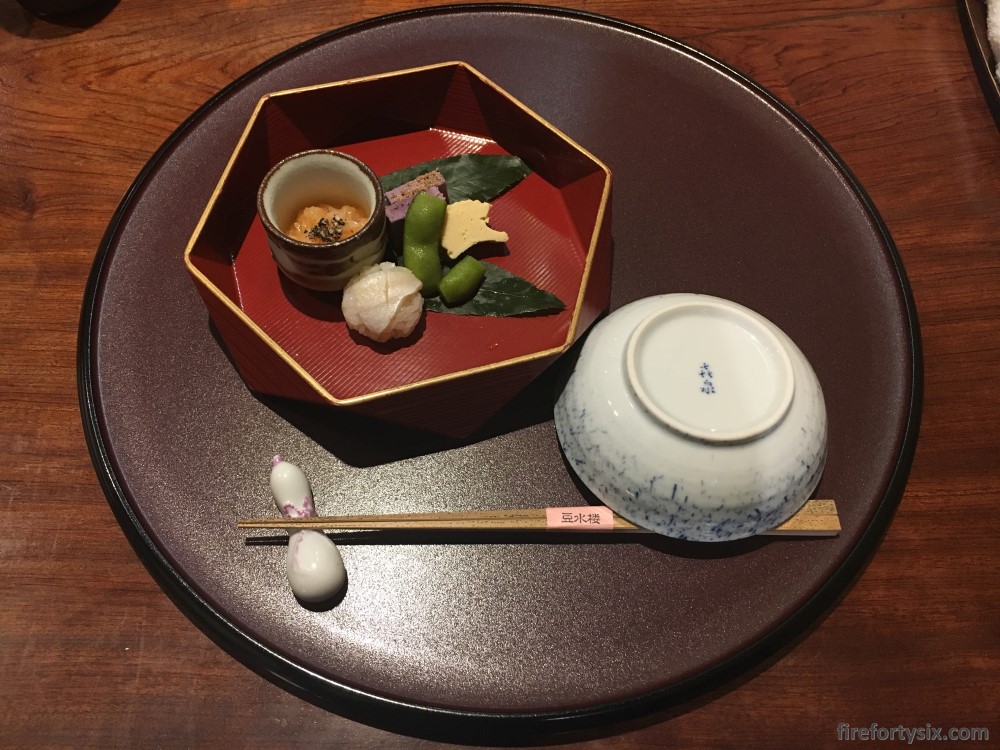
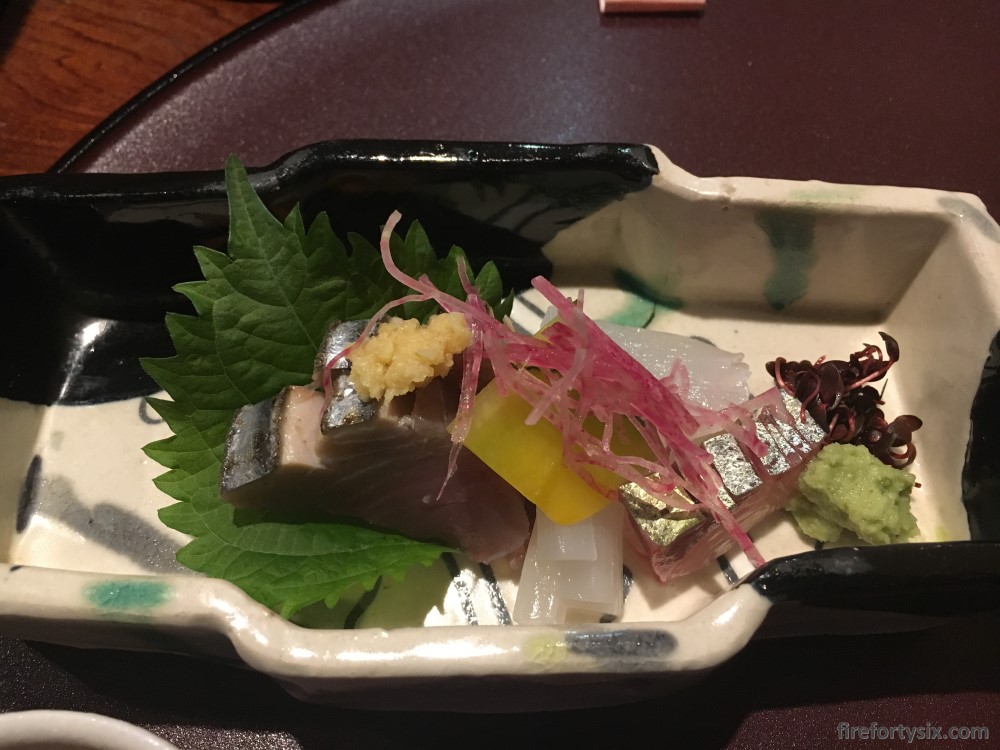
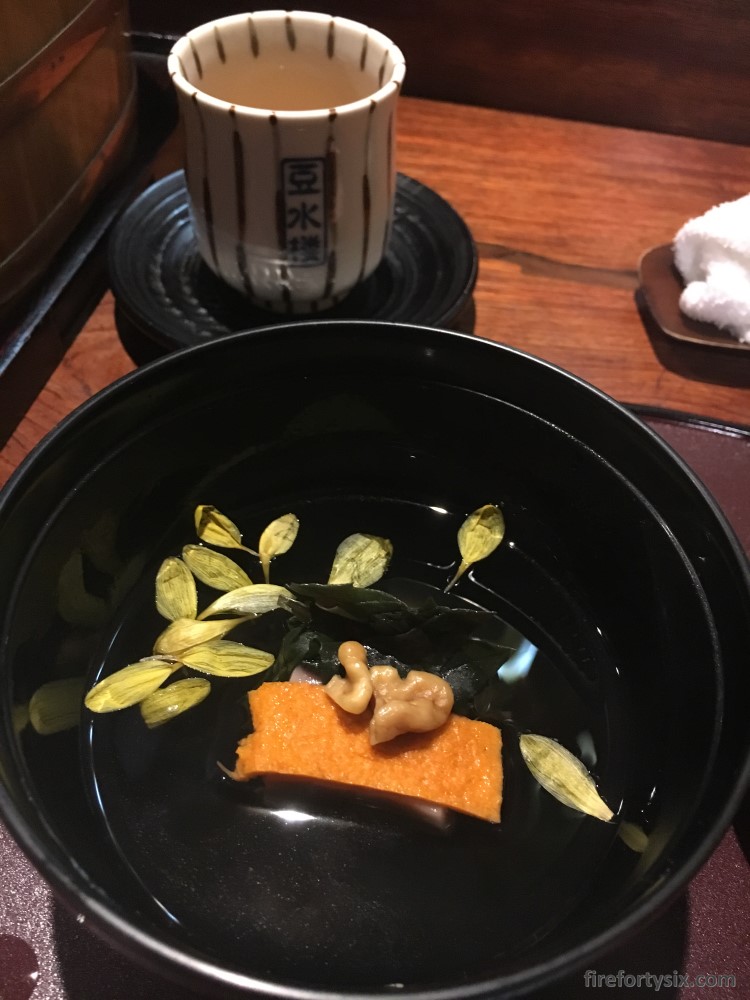
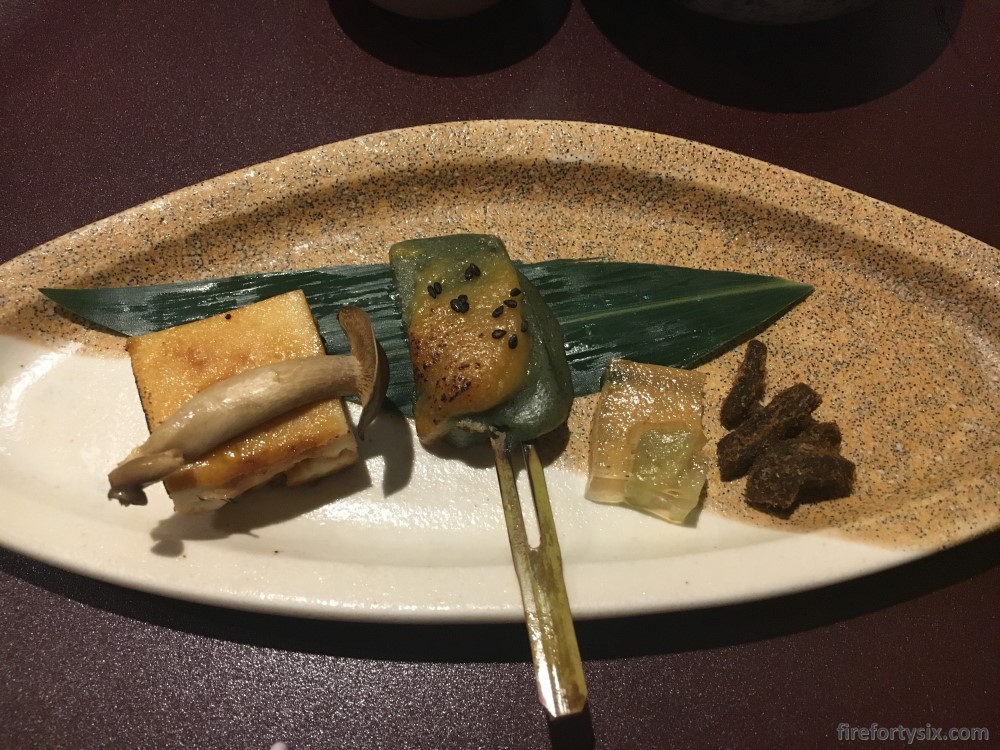
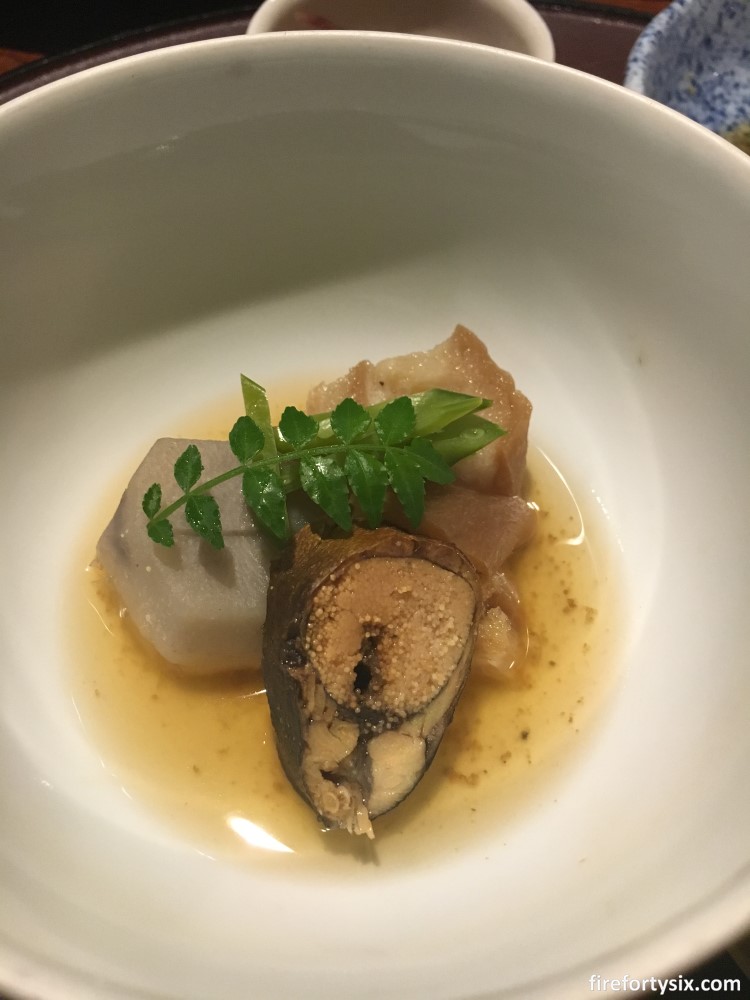
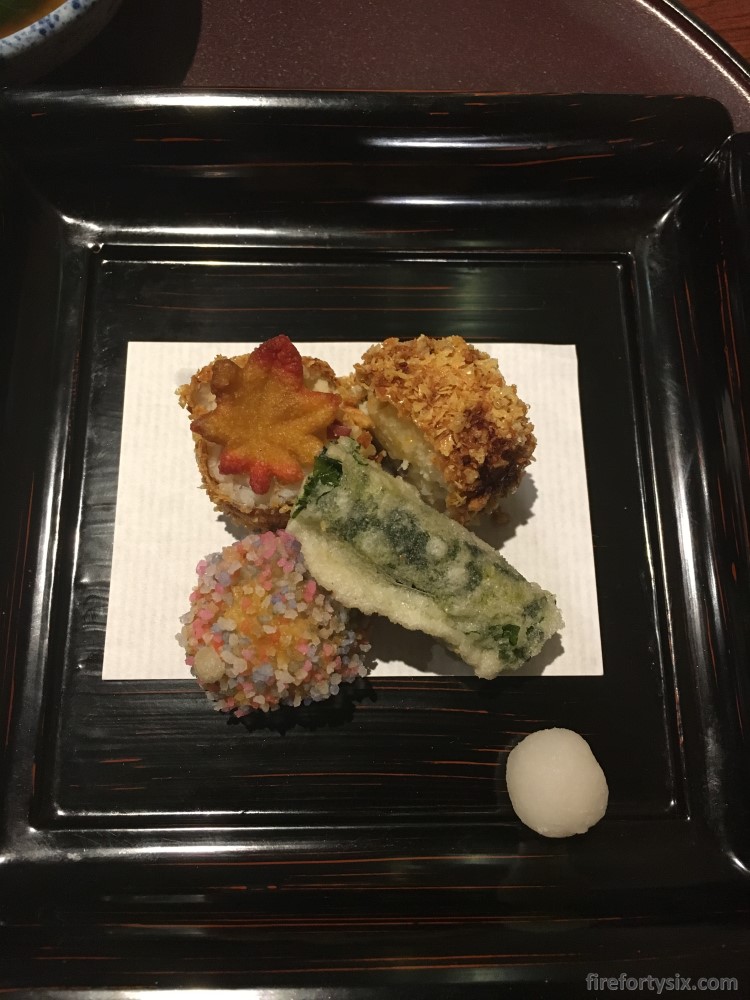
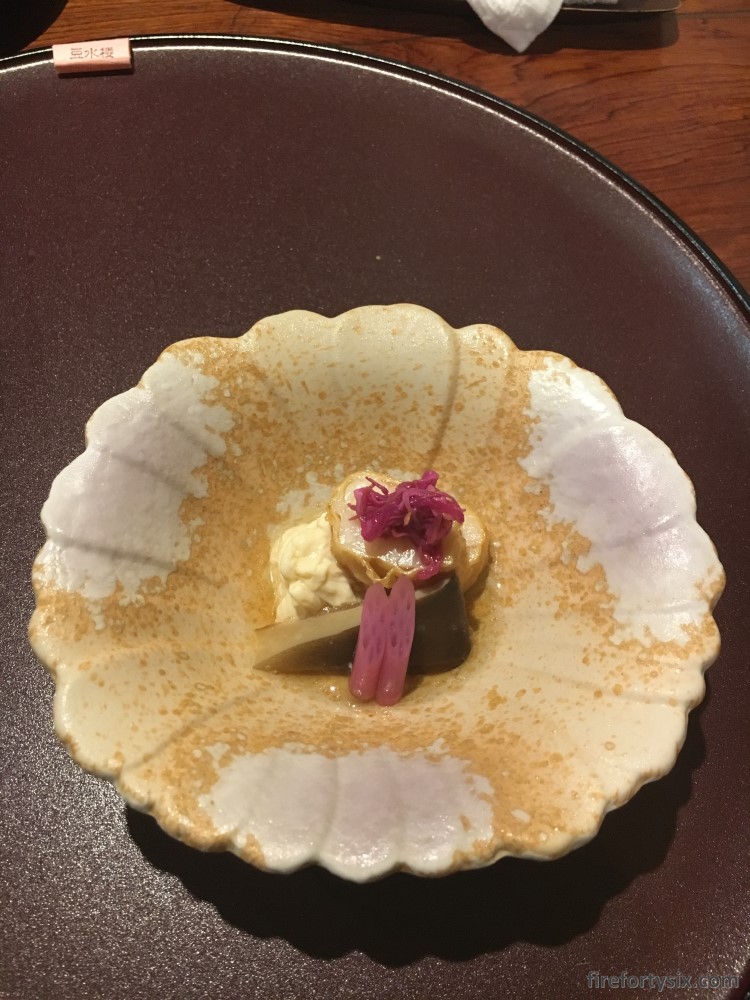
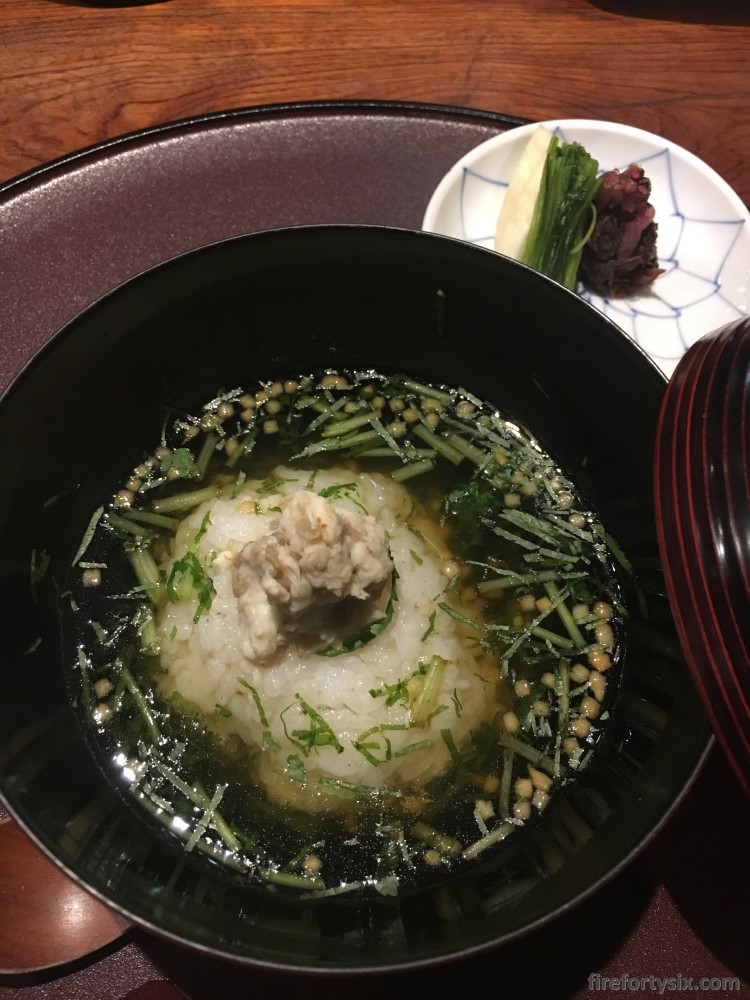
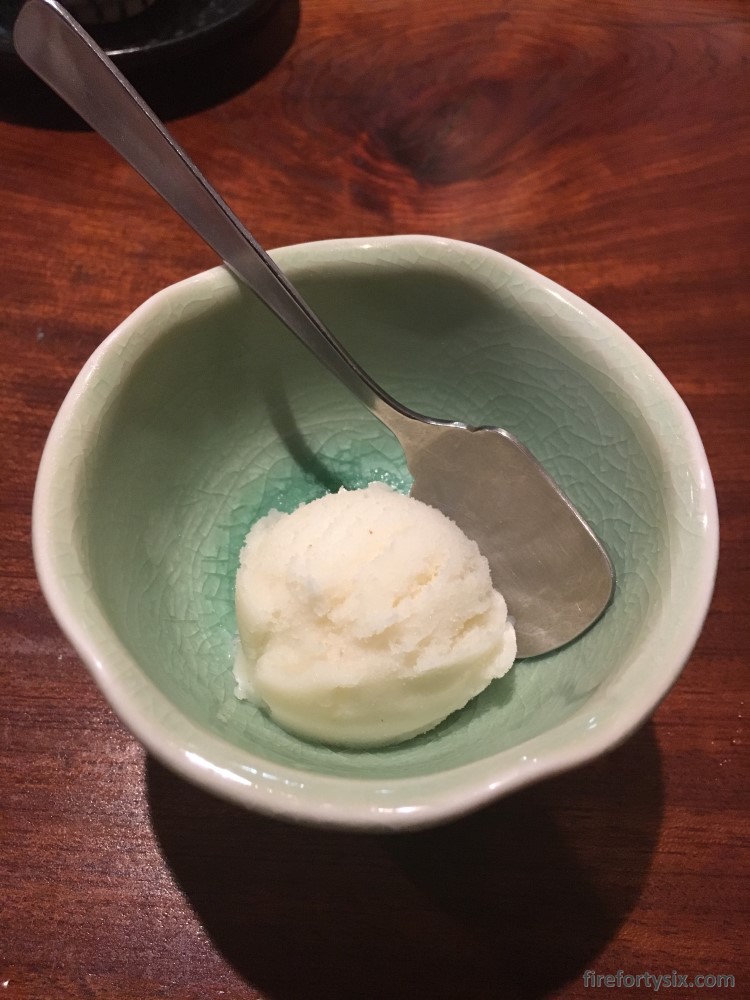
The boiled oboro tofu turned out to be a more elaborate affair that simply serving us a plain dish of warm tofu.
First, a mini onsen was placed in front of us and plugged into an electrical socket behind the counter. Then a mini pitcher of sauce and a dish of chopped spring onions and minced ginger were laid out. And finally, after the water in the onsen was sufficiently heated up, our waitress unveiled its contents — large blocks of tofu swimming amongst spinach leaves.
Scoop out a chunk of tofu and spinach, pour on the sauce to taste and top with spring onion and ginger. Rinse and repeat until all the tofu is finished. And then repeat again, because they will keep refilling the tofu until you surrender.
I was curious, and asked our waitress: “So, what is the maximum number of times you have refilled the tofu?”
She paused for a while to recall, and replied simply: “Six”, and apparently the feat was accomplished by an elderly Japanese couple. Now, I’m a big fan of tofu and it’s one of my favourite foods, but I still have a long way to go.
We surrendered after the first refill.



Gion Karyo (祇園迦陵)
Our next kaiseki meal was lunch at Gion Karyo (祇園迦陵), which was very good and covered in detail in an earlier post. Below is a quick photo recap, for easy comparison.
Clearly, there are many common elements, including the appetiser, soup, sashimi, steamed dish, rice with pickles and dessert. But there are also distinct differences, like the choice of fish and the wider range of ingredients used.
Both restaurants also had markedly different ambience. Tosuiro felt more like a family restaurant whereas Gion Karyo had a more refined feel, almost approaching fine dining.

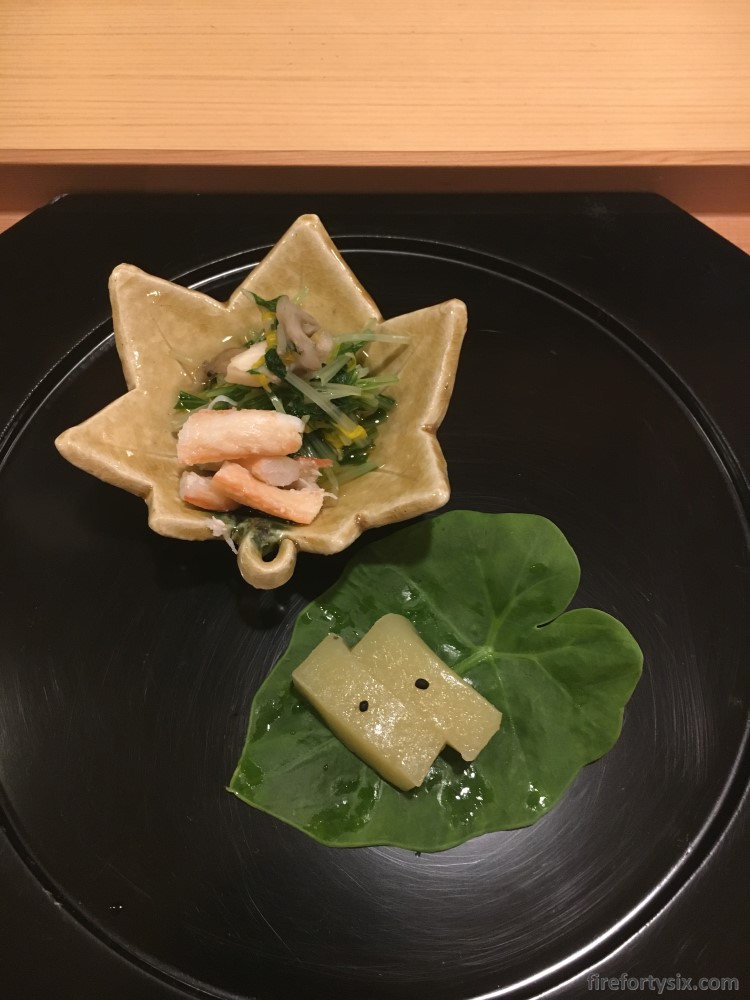
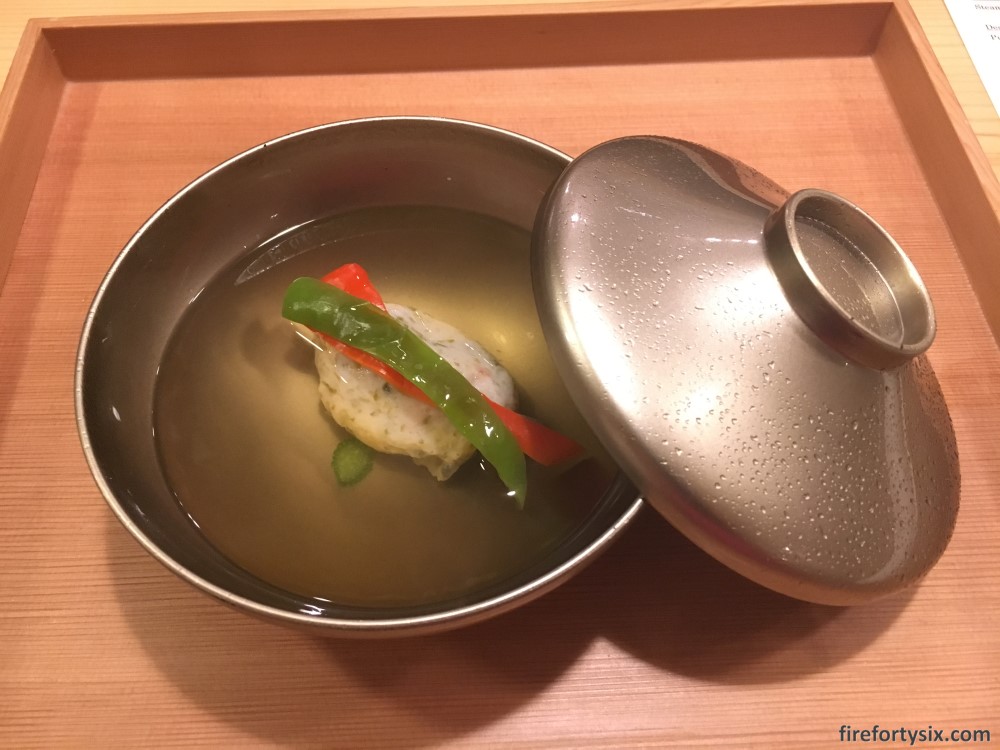

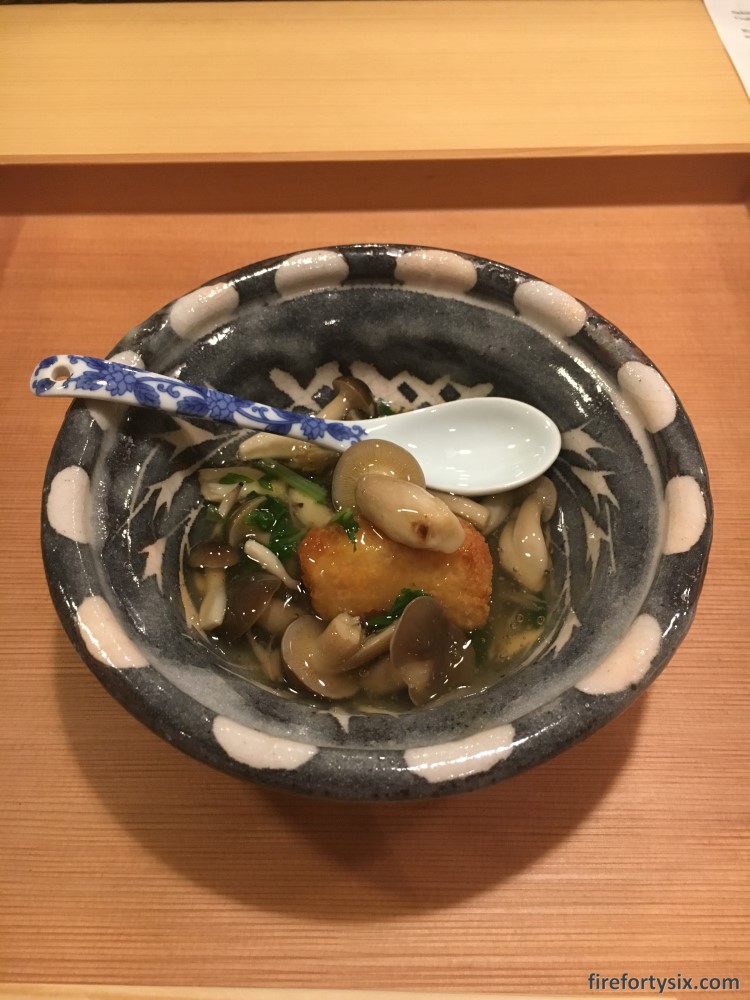
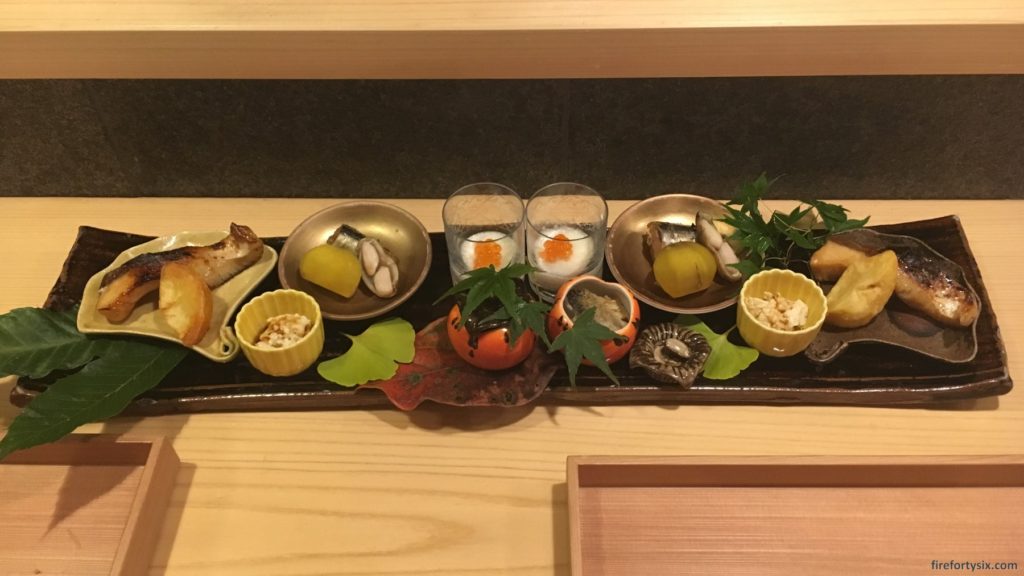
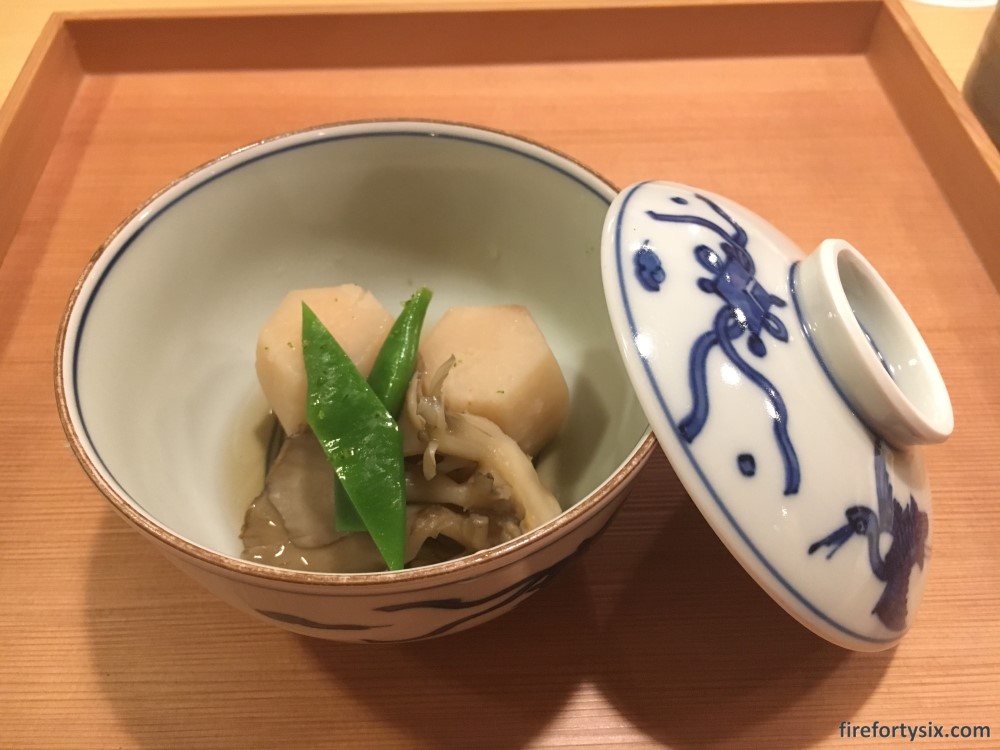
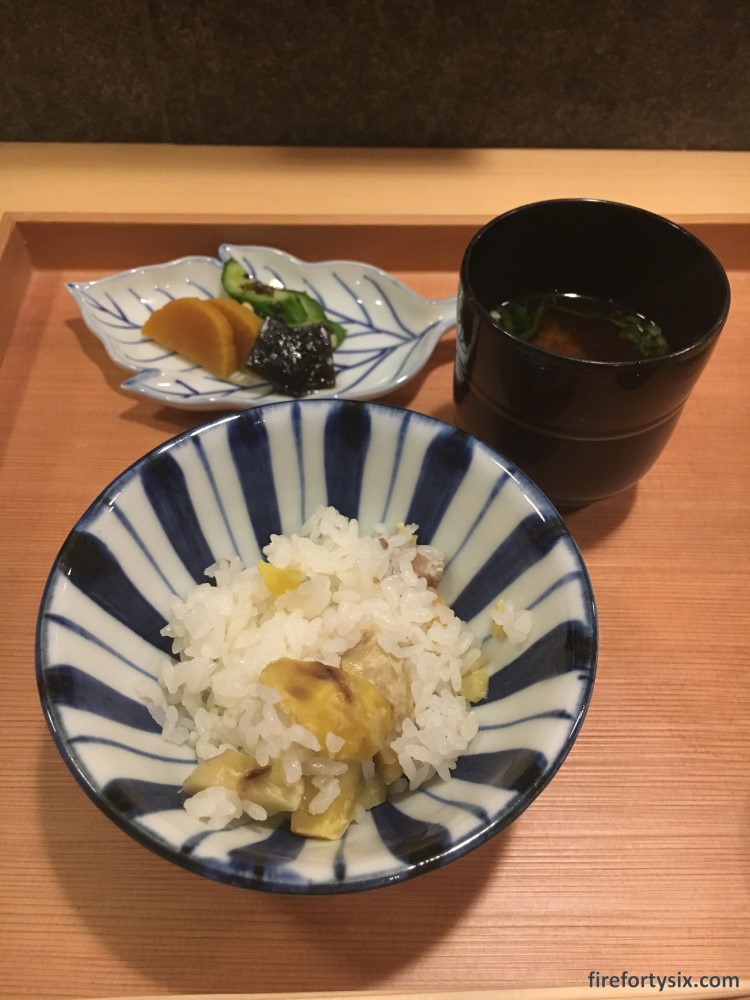
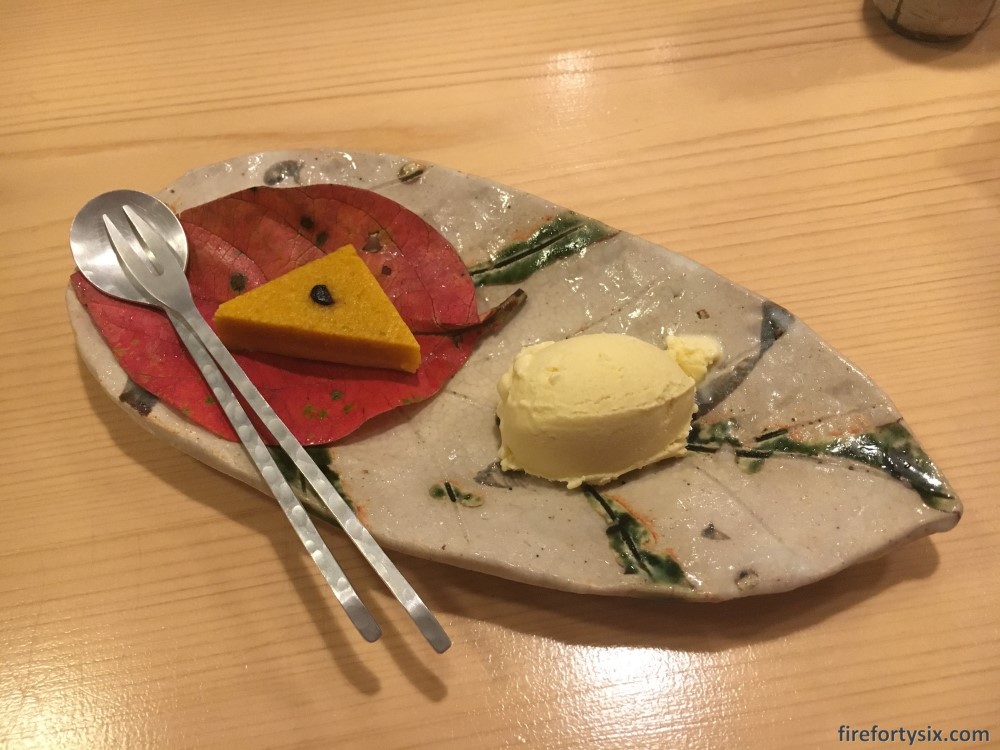
To avoid diminishing marginal utility, we planned for our next kaiseki meal to be a few days later, enjoying other local dishes like soba, yuzu nabe, tonkatsu and tai chazuke in the meantime.
Shiraume (白梅)
Our anticipation and expectation accumulated over time and when we finally had our dinner at Shiraume (白梅), we found out how magical a perfectly executed kaiseki meal could be.
The complete ryokan experience at Shiraume is documented separately, but here are the photos from the dinner. Everything was served, course-by-course, in our room and it was easily one of the best meals that we’ve ever had.



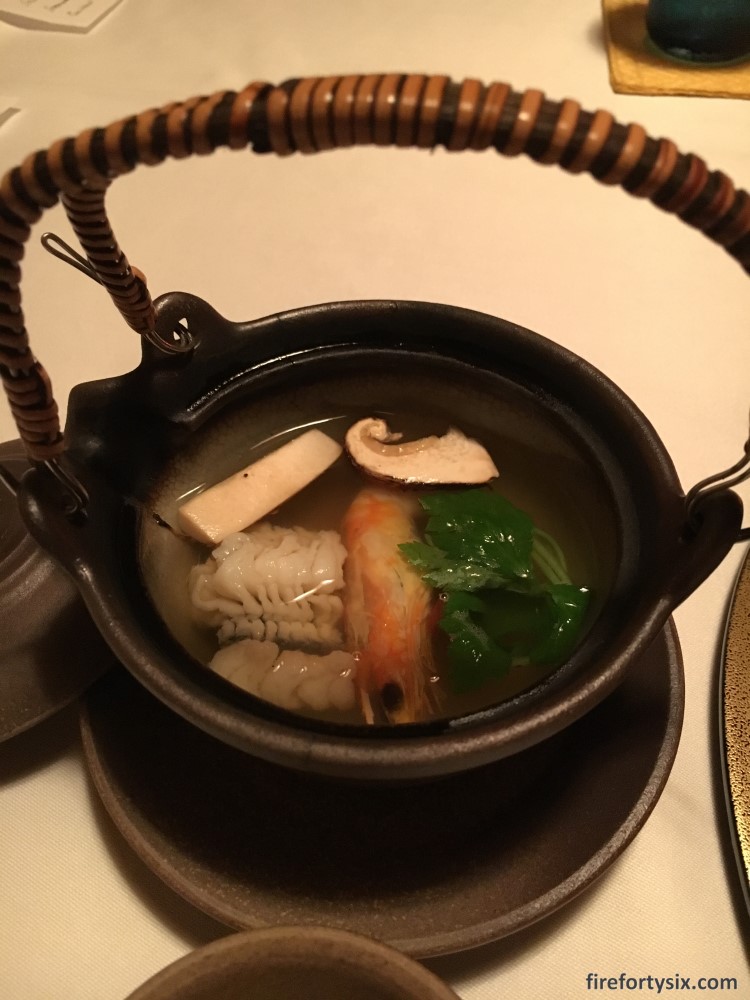
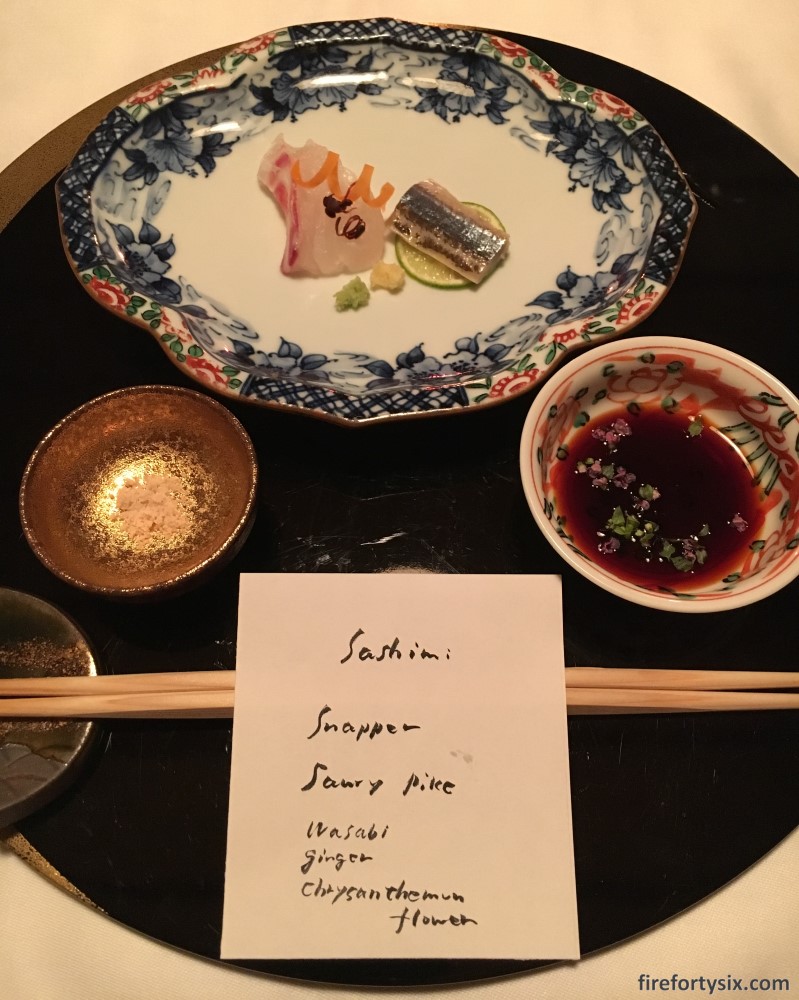
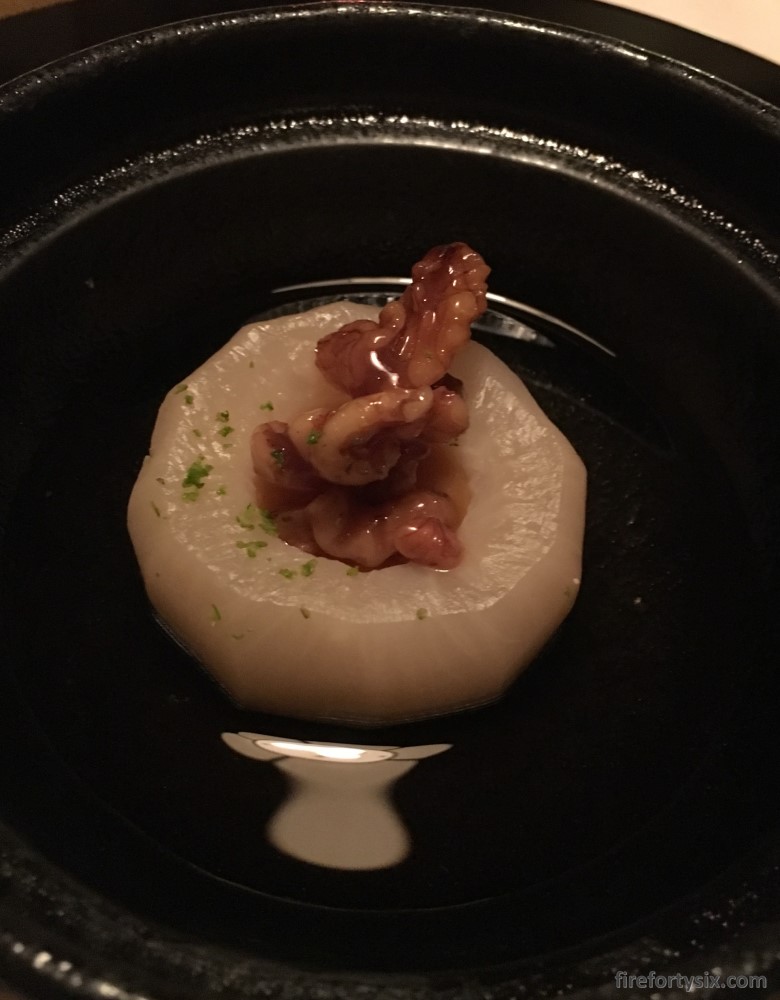
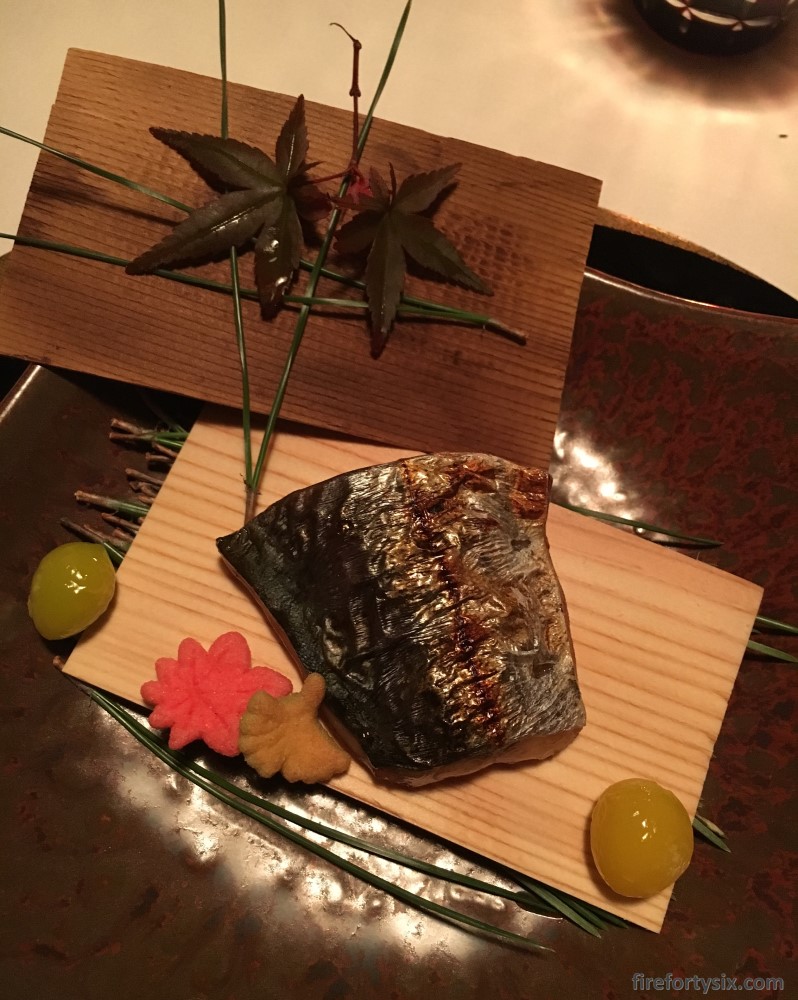
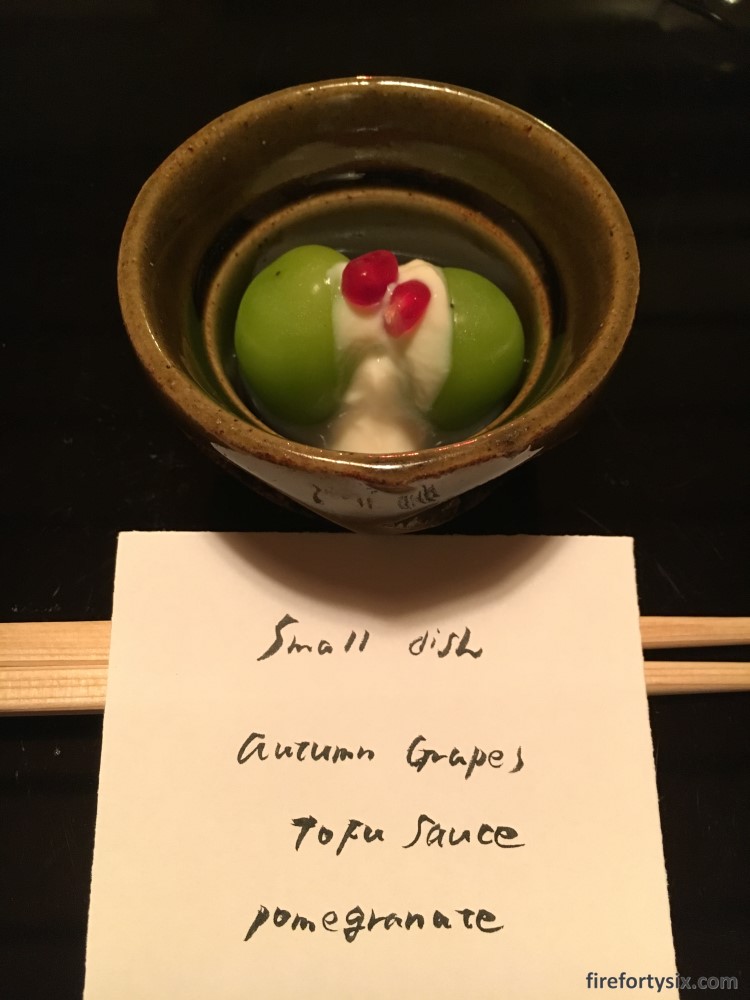
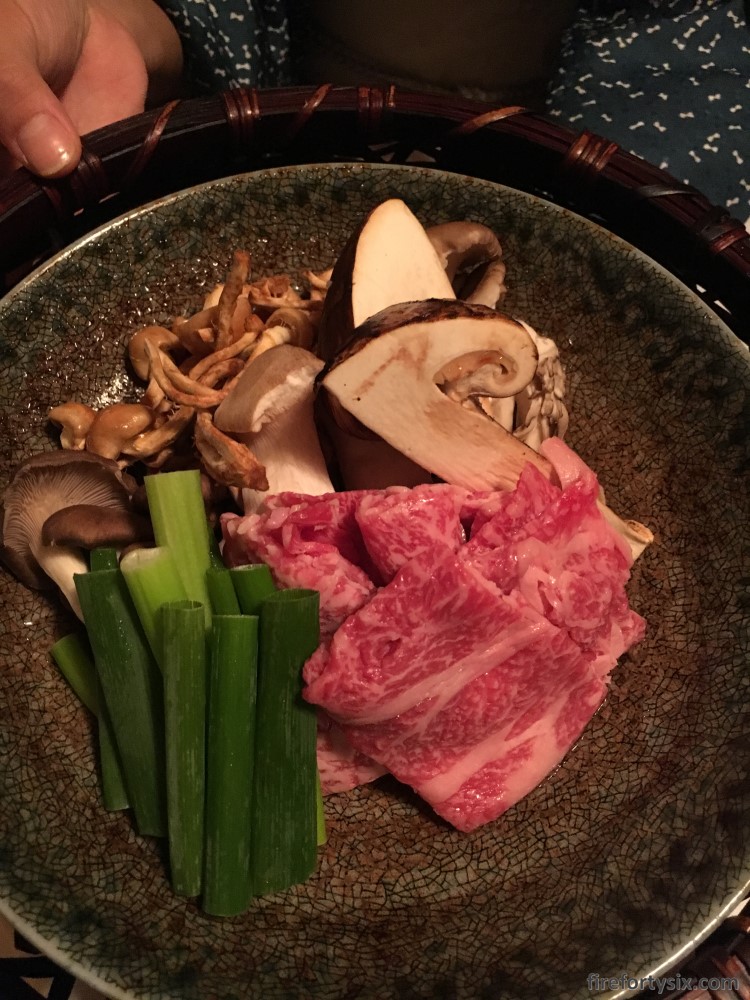
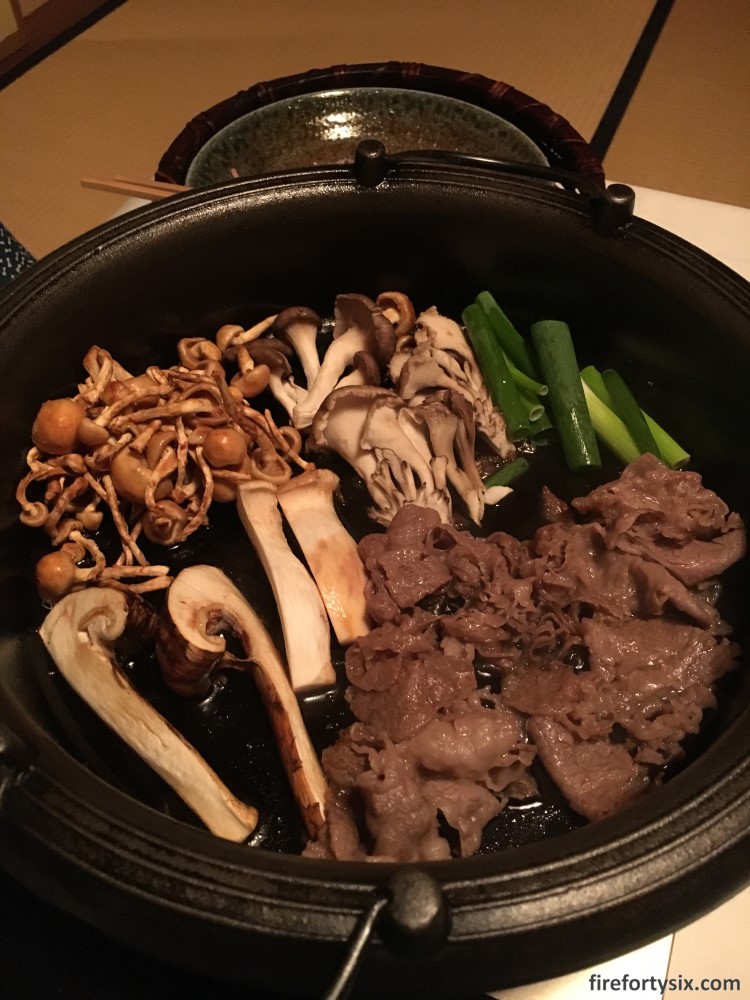
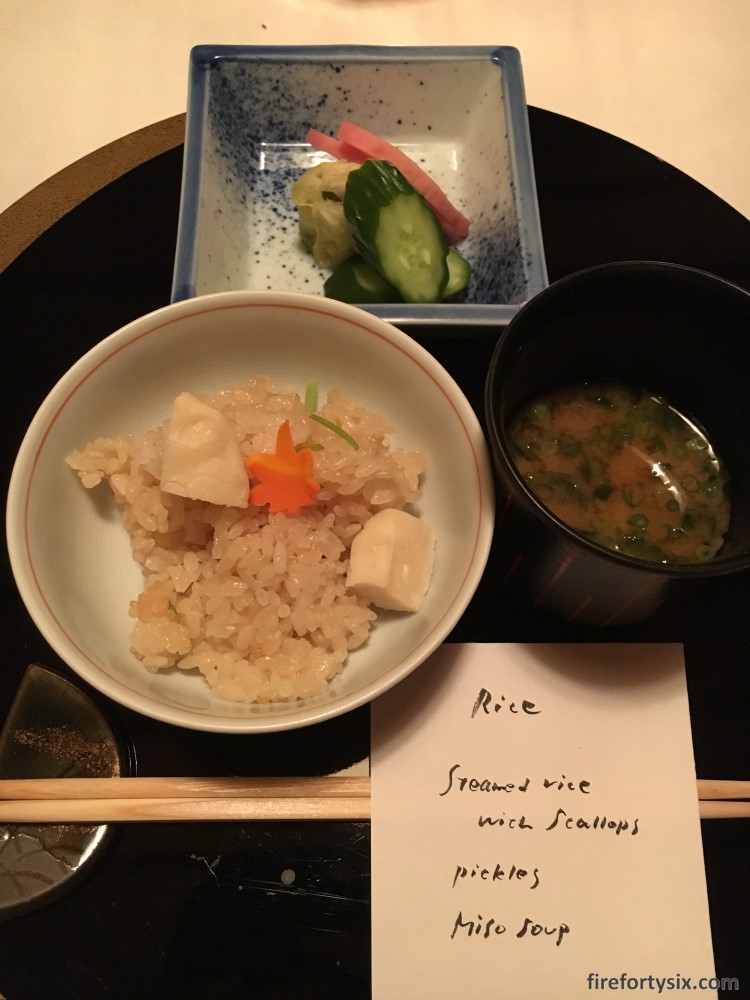
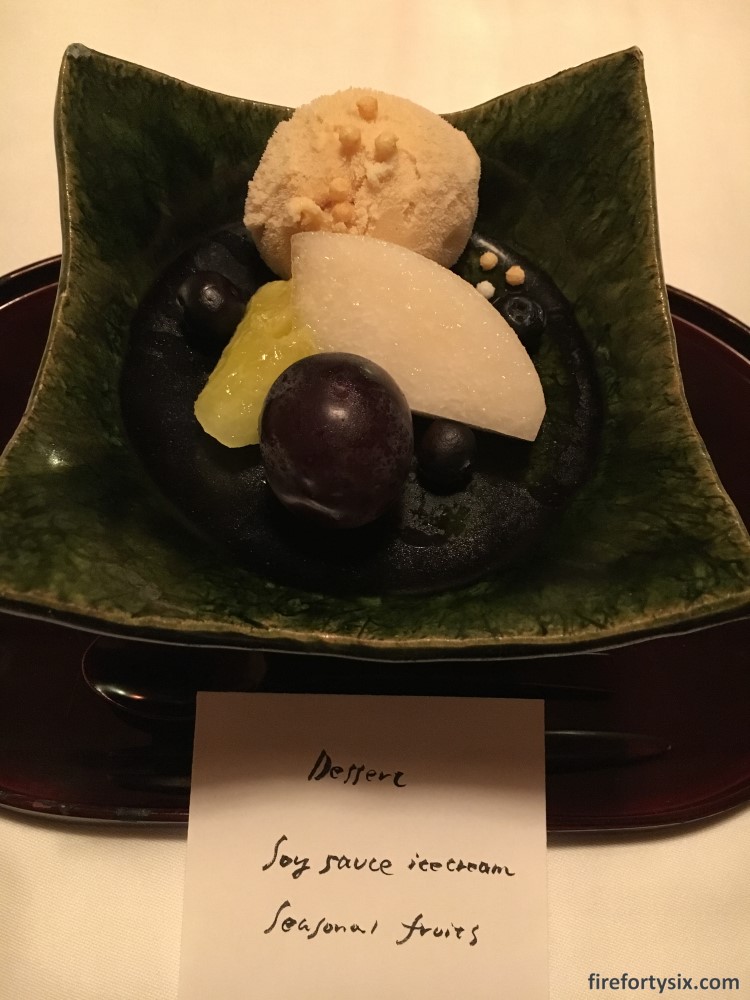
Ajikitcho Bunbu-an (味吉兆ぶんぶ庵)
So far, each of our kaiseki meals had been progressively better than the last, and we naturally had high hopes for our fourth and final one at Ajikitcho Bunbu-an (味吉兆ぶんぶ庵) in Osaka.
After all, it had one Michelin star and was in the same building as the fancy St. Regis Osaka hotel. It had to be fantastic, right?
Wrong.
It wasn’t terrible, but it just wasn’t that good.
The entrance was fancy enough.


But when we stepped it, the feeling was more like a family restaurant rather than a one-starred Michelin place. When we were seated, we weren’t given a menu and when each course arrived, and they arrived very quickly with minimal explanations.
It felt like they just wanted to serve us as quickly as possible and turn the cover around to maximise revenue. Which would have been fine if it was a run-of-the-mill restaurant, but this was supposed to be a fancy one-starred restaurant serving fancy kaiseki-ryōri.
Definitely didn’t feel that way to us, not after the three earlier meals that we had in Kyoto.
What about the food, you ask?
Well, it wasn’t bad, but it wasn’t that good either. The individual components were all there — appetiser, soup, sashimi, assorted dishes, grilled fish, steamed yam, rice with pickles and dessert — but it didn’t feel like we were having a special meal.
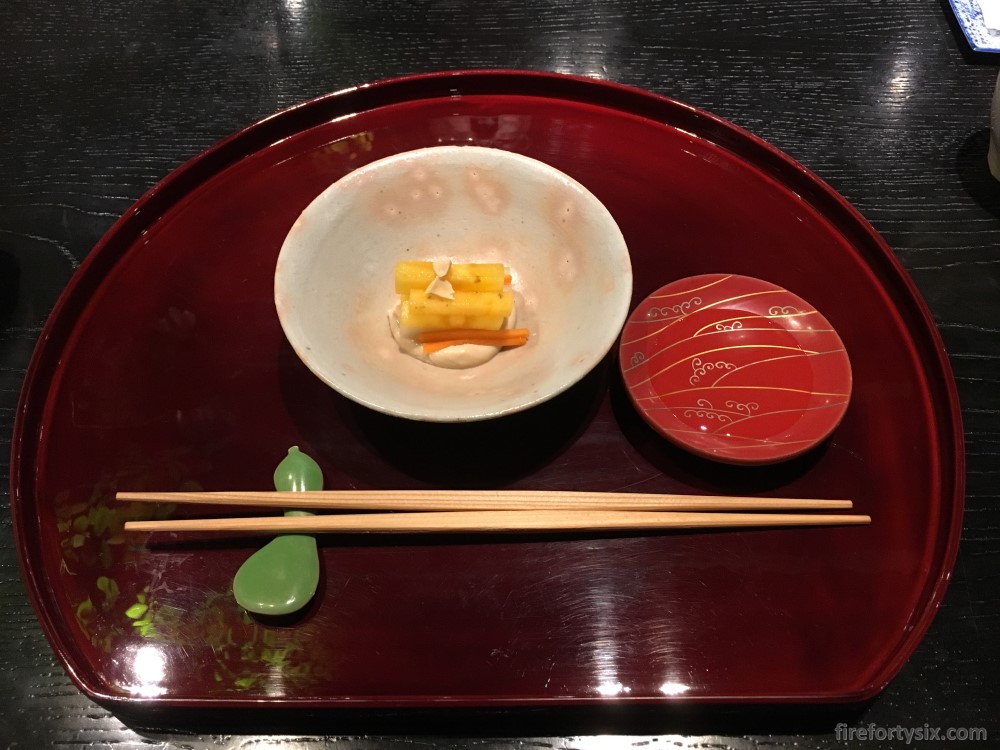
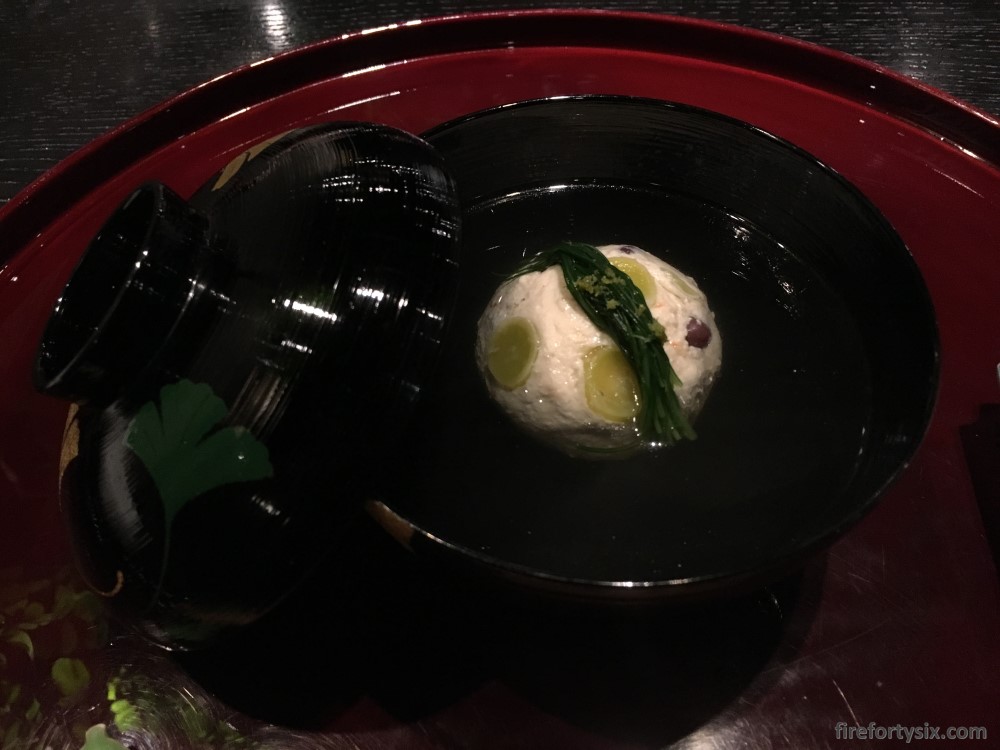

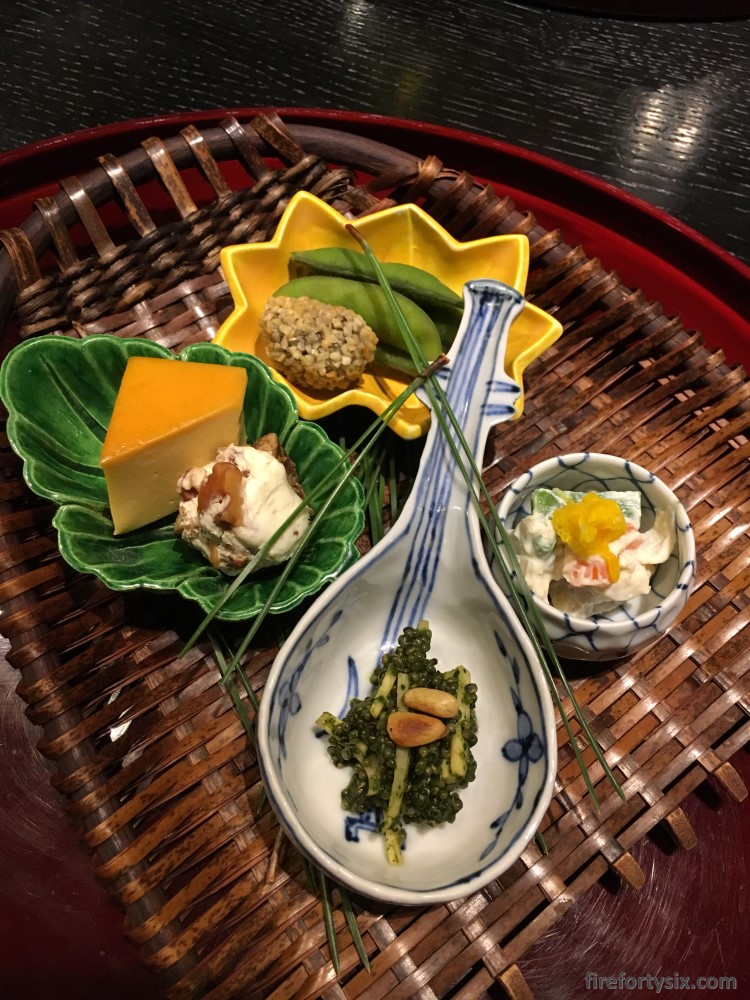
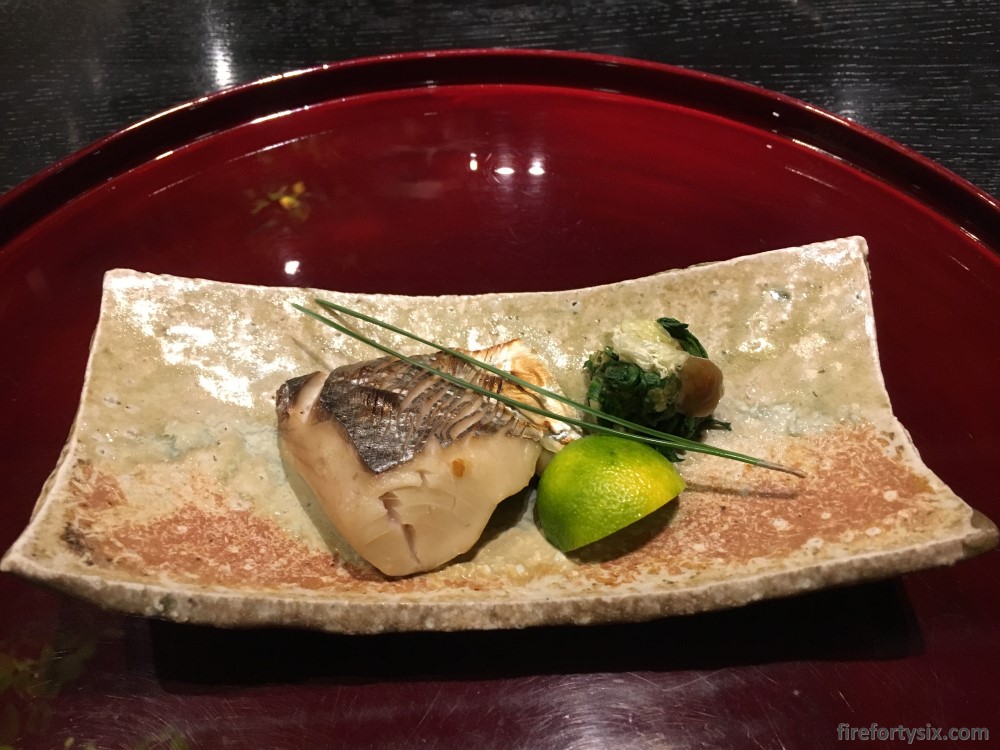
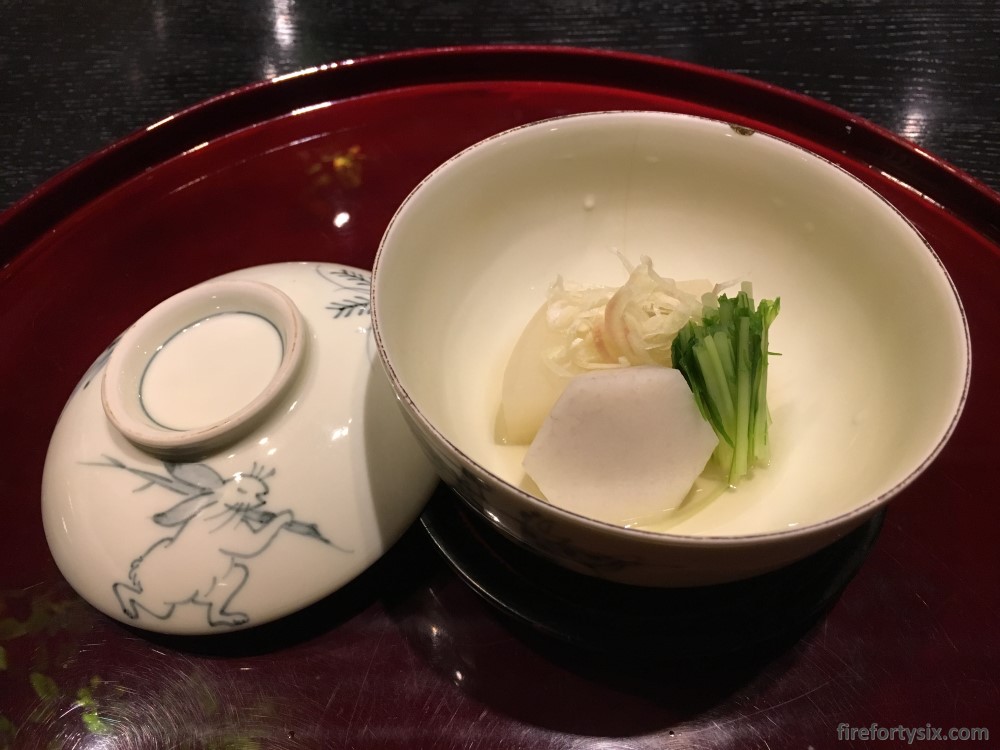
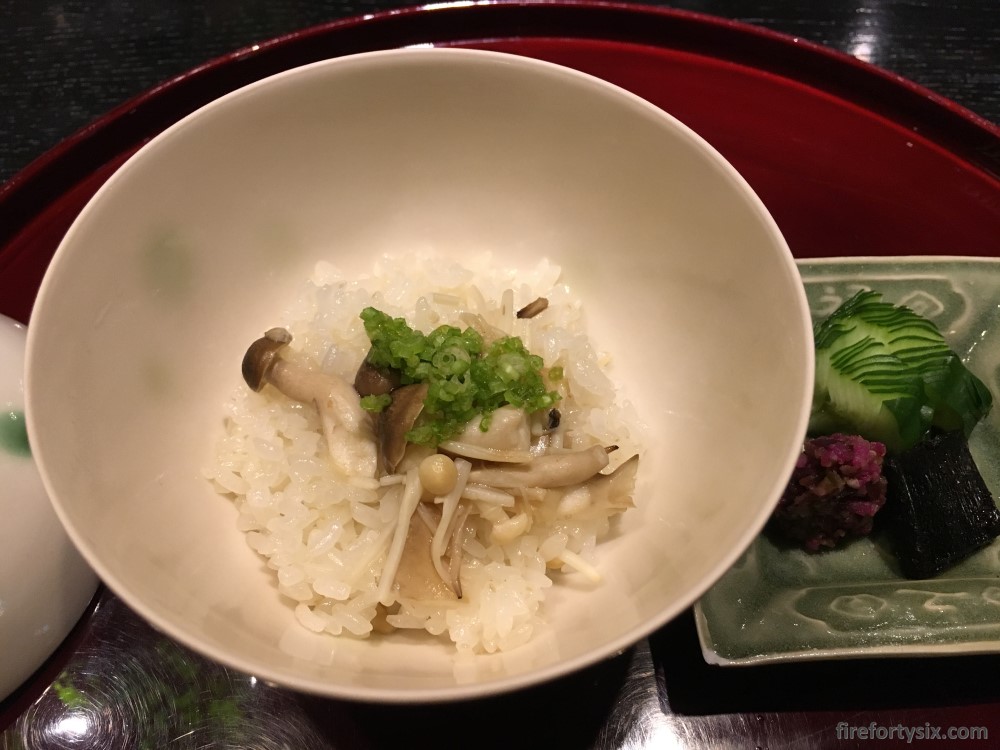
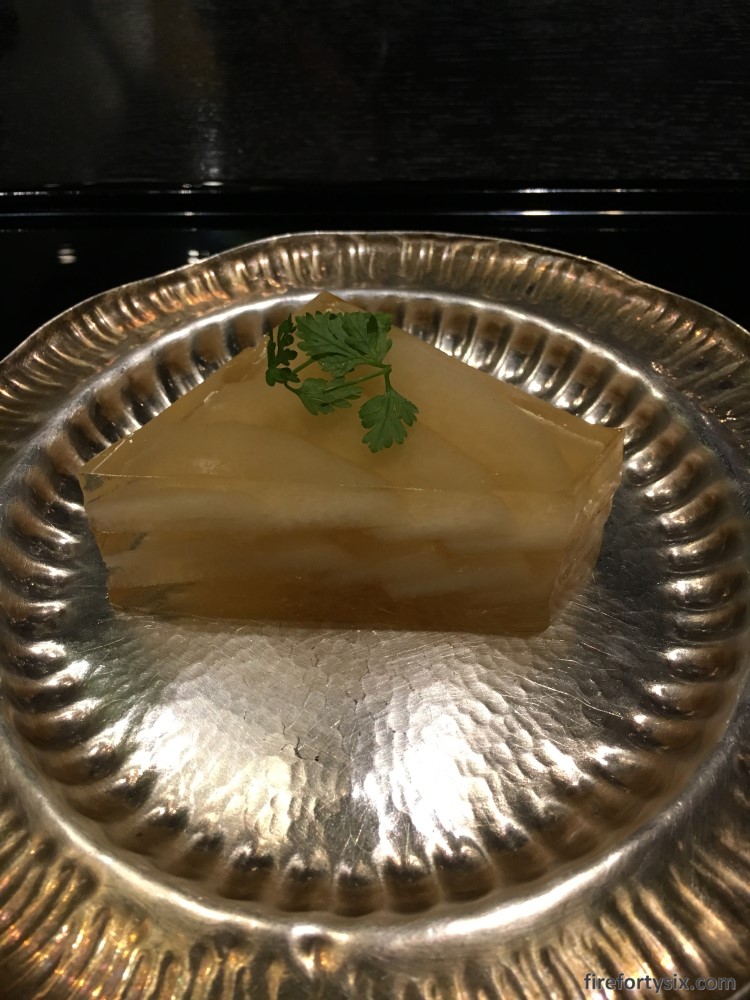
I suppose it’s like a great superhero movie, where the hero is only as good as the villain is bad. If Thanos wasn’t so badass, the Avengers would just be a bunch of people in costumes.
So, it was good that Ajikitcho wasn’t great. It provided a reference for comparison, and made us appreciate the other meals more.
Looking back, all four met the technical definition of what a kaiseki meal should be, but what differentiated them was how they made us feel as we were having our meal, i.e. the elusive omotenashi that great Japanese service establishments strive to achieve.
We will continue to have kaiseki-ryōri whenever we have the chance, and we will continue to hold them to the highest standards. While there may be different shades of kaiseki, the common thread that runs through them should always be the strive for excellence.
Eleven days in Osaka, Kobe and Kyoto
The world has changed forever due to that-which-must-not-be-named and international travel is on an indefinite pause. There are many countries we want to visit again and Japan is definitely among the top choices.
In the meantime, as we remain grounded in Singapore, we can look back and remember the wonderful time we had in our eleven days in Osaka, Kobe and Kyoto during the autumn of 2018, two years and a lifetime ago.
Paperback: www.amazon.com/dp/B08DC84GBD
eBook: www.amazon.com/dp/B08DD8P8W3
